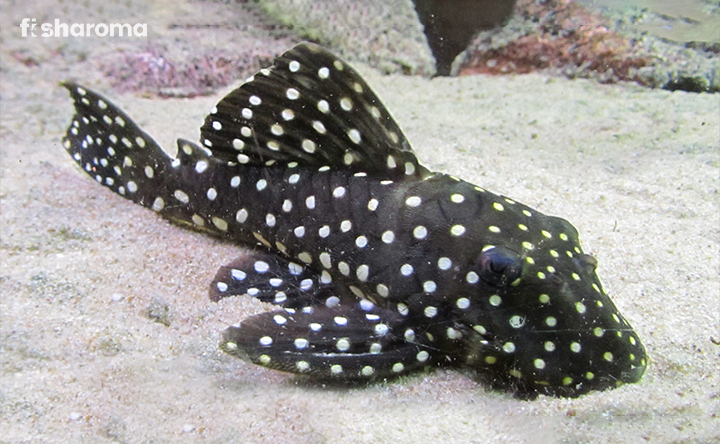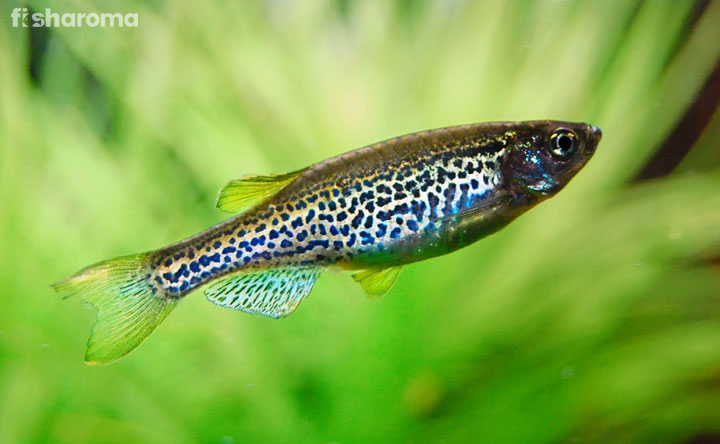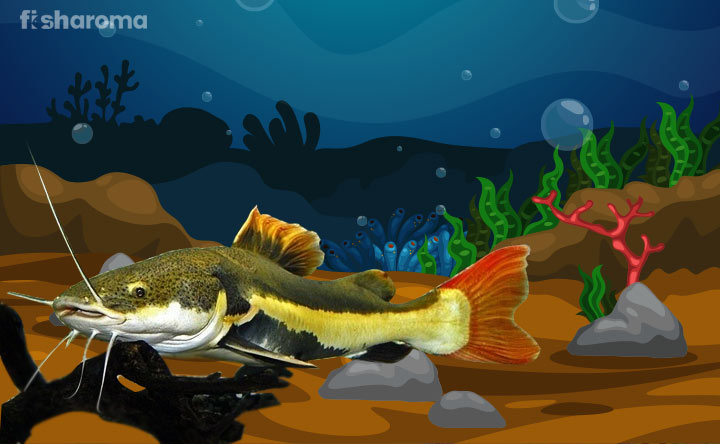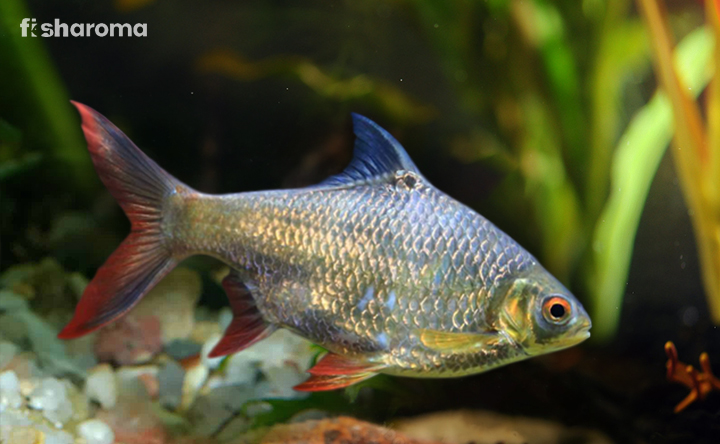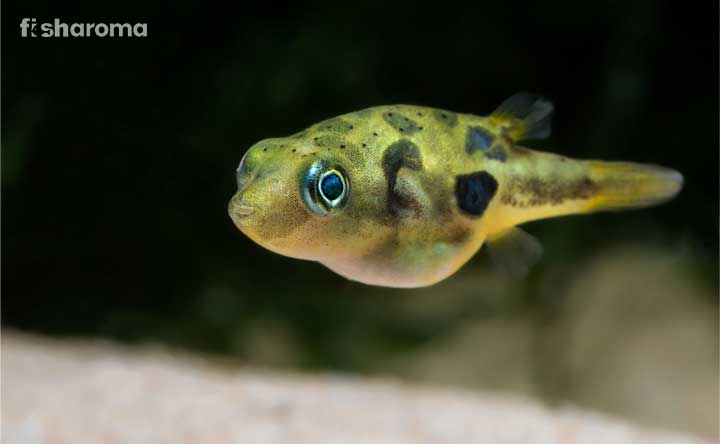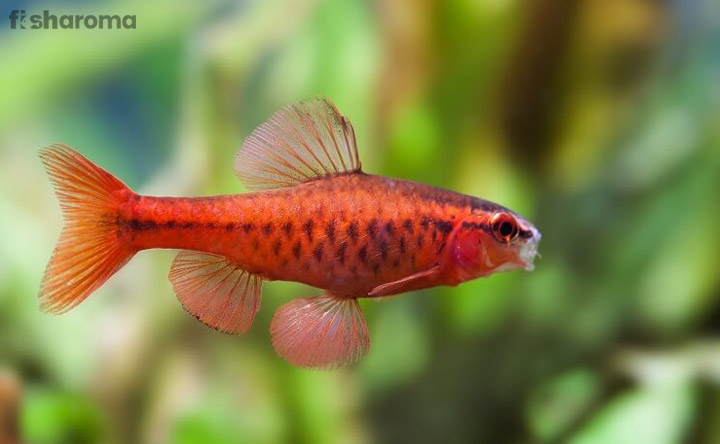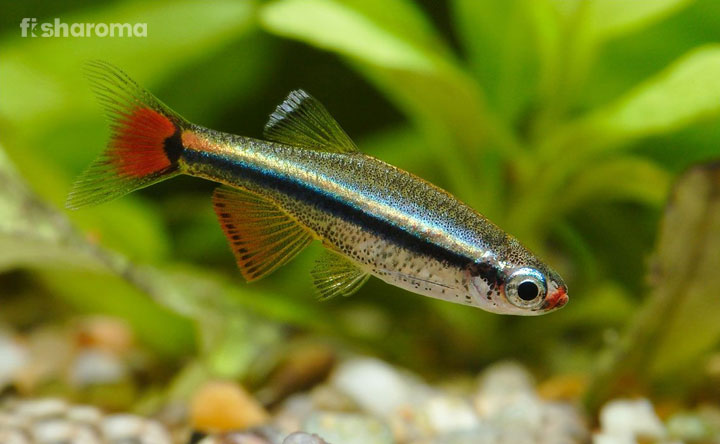Shubunkin Goldfish – Ultimate Care Guide of Your Golden Pet Fish

- Origin of Shubunkin Goldfish
- Appearance of Shubunkin Goldfish
- Types of Shubunkin Goldfish
- Temperament of Shubunkin Goldfish
- Suitable Tankmates for Shubunkin Goldfish
- Diet Plan for Shubunkin Goldfish
- Tank Requirements for Shubunkin Goldfish
- Water Type for Shubunkin Goldfish
- Breeding Process of Shubunkin Goldfish
- Diseases of Shubunkin Goldfish with Interventions
Fish enthusiasts know that Goldfish is one of the popular and common freshwater fish breeds which is the favorite of every beginner or expert aquarist. However, there are various members in a family of Goldfish; among them, Shubunkin Goldfish can be the stunning attraction for a tropical aquarium.
The bright bluish and yellow colors of this fish attract the hobbyists. Moreover, its hardy nature and peaceful temperament also make it one of the favorites of novice fishkeepers. Shubunkin Goldfish is adaptable in every type of water because it is not a fancy Goldfish.
Quick Details
If you are looking for a beautiful and peaceful fish for your aquarium, then it is the best choice. We have given a short detail about this freshwater fish; have a look.
| Scientific Name | Carassius auratus |
| Origin | Japan |
| Life-Span | 15 years |
| Colors | Calico, Yellow-Blue (Bicolor) |
| Temperament | Peaceful |
| Size | 12” (30.48 cm) |
| Diet | Omnivore |
| Family | Cyprinidae |
| Compatibility | With Peaceful Species |
| Tank Size | 75 gallons |
| Care Level | Easy |
Overview
This slim and slender-shaped Goldfish is a sign of luck in China, Japan, and other Asian countries. Moreover, psychologists also suggest keeping a school of multicolored Shubunkin Goldfish in your aquarium and setting the fish tank in your bedroom. Before going to bed, if you watch the colorful fish swimming actively in the tank, then it will release your stress.
Just like Danios and Carps, Shubunkin Goldfish also belongs to the Cyprinidae family. This calico-shaded fish is an amazing addition to community tanks and ponds. In the early days, emperors used to keep Shubunkin Goldfish in the water garden or ponds of their house. You have to buy a spacious tank to keep this fish because Goldfish has a habit of jumping high. Always close the lid of the fish tank tightly, so that the fish cannot come out of the aquarium.
Shubunkin Goldfish is also known as ‘Calico Cat’ because of the calico color on its body.
Origin of Shubunkin Goldfish
Shubunkin Goldfish is native to Japan and other East Asian regions. It is the result of the crossbreeding of Comet Goldfish and Telescope Eye Goldfish, so its shape is similar to Comet Goldfish. The name of this fish was kept by an aquarist of Japan, Yoshigoro Akiyama.
Appearance of Shubunkin Goldfish
You will find this single-tailed hardy Goldfish in a combination of multiple colors like yellow, red, white, blue, black, and orange. The shape of this fish is like Common and Comet Goldfish. The fins of this fish are long and flowing. When this fish swims, you will find its long fins floating on the surface of the water.
Shubunkin Goldfish has nacreous scales which is intermediate between transparent and metallic scales with a pearly appearance. You will find white, red, gray, black and blue patches on the tail and fins of the fish.
Types of Shubunkin Goldfish
Goldfish are of various types but Shubunkin Goldfish are of three types with the same sizes and patterns. Every Shubunkin Goldfish is of different colors. Let us know more about different types of Goldfish.
- London Shubunkins: This Shubunkin Goldfish has a stout body and has short rounded fins like Common Goldfish. It is a multicolored fish.
- American Shubunkins: This fish has a slim body with a sharp tail which is just like a fork. The fins of this fish are long and flowing. This fish is colored with silver and orange shades.
- Bristol Shubunkins: Bristol Shubunkin Goldfish looks like Comet Goldfish. Its tail is distinctive, pointed and large. The name Bristol comes from Britain because it is a popular fish in the U.K.
Temperament of Shubunkin Goldfish
Shubunkin Goldfish is an active, peaceful and social fish that can be kept in an indoor and outdoor community tank. It has a bad habit of nipping the fins of other long-finned fish, so it will be better if you keep it within its own community and with other short-finned fish.
This fish is an active swimmer, so it prefers living with active fish breeds only. Avoid keeping slow-moving fish in the tank of Shubunkin Goldfish.
Shubunkin is a foodie fish that fights for food. Therefore, try to provide plenty amount of foods to the fish to avoid fighting. However, never overfeed the fish because that may be the reason for the digestive problem in the fish.
Suitable Tankmates of Shubunkin Goldfish
The shy and slow-moving fish cannot adjust with Shubunkin Goldfish. Moreover, you cannot keep it with aggressive predators. Try to keep peaceful and same-sized fish breeds in the tank of this fish such as:
- Koi Fish
- Guppy Fish
- Glass Catfish
- Tetra Fish
- Cherry Barb
- Amano Shrimp
Unsuitable Tankmates
Avoid keeping Shubunkins with small, shy, large and predator fish breeds. Small and shy fish cannot adjust with this Goldfish because it can snatch their foods, and large predators can harm or eat up this Goldfish. Avoid keeping the aquatic species like:
- Cichlids
- Tiger Barbs
- Oscars
- Cherry Shrimps
- Ghost Shrimps
- Mollies
Compatibility
You can keep 2-3 Shubunkin Goldfish in your aquarium. Shubunkins are comfortable to live with the members of the same community.
Diet Plan for Shubunkin Goldfish
This omnivoros fish is not a picky eater, but it is infamous for snatching foods for other fish. So, whether you feed vegetative, or you feed meaty foods to this fish, try to provide them in an adequate quantity. You can feed them twice a day. The intestinal tract of Shubunkin Goldfish helps it in digesting the foods. The favorite foods of this fish are:
- Small Insects
- Tiny Crustaceans
- Plant Leaves
- Vegetables
- Worms
You can also feed pellets, flakes, dry and frozen foods to Shubunkin Goldfish that are available in the market. These readymade foods are made of various nutrients, which help the fish grow faster and remain active. Take a look at some of the names of such foods:
Tank Requirements for Shubunkin Goldfish
Shubunkins can live in both slow-moving and fast-moving rivers, lakes, ditches, and ponds. If you maintain the water parameter of the aquarium properly and provide a spacious tank to this fish, then this active swimmer will feel comfortable. Also, follow a few requirements to set the fish home.
Tank Size
You can keep 4-5 Shubunkins in a 75-gallon fish tank. You can buy a rectangular-shaped aquarium for this fish so that it can swim comfortably.
Ornament
Keep medium-sized gravels at the bottom of the aquarium as a substrate. Also, make the fish tank eco-friendly by keeping some aquatic plants like Hornwort, Anacharis, and Java Fern.
Lighting
Arrange a low to moderate lighting on the top-most part of the aquarium of Shubunkin Goldfish.
Filter
It is essential to arrange a good filtration system in the tank of this fish because Goldfish makes its tank messy with lots of uneaten foods. Moreover, it excretes more than other fish breeds. So, a sponge filter is needed for its tank, which will help in flushing out the toxic elements from the tank.
Water Type for Shubunkin Goldfish
Maintaining the quality of the water for the tank of Shubunkin Goldfish is necessary, so it is essential to keep fresh aerated water in the aquarium of this fish. Also, keep in mind the following factors for maintaining the water condition.
Temperature
The temperature of the water of the tank should be 65-72°F (18.33-22.22°C). Goldfish prefer living in moderate water temperature. Don’t keep this fish in low-temperature water.
pH Level
The pH level of the water in the tank must be 6-8.
Hardness
The hardness of the water in the tank should be 5-19 dGH.
Cleaning Method
Use soft liquid soap and a brush to clean each corner of the aquarium. Shubunkin Goldfish is not an algae eater, so you have to clean the algae from the tank also by using a brush. Once the scrubbing part is complete, wash the aquarium and wipe out each object with a cotton cloth.
Replacement Process
You should change about 10% of the water in a week in the tank of Shubunkin Goldfish because this fish is quite messy and make the fish home dirty. If the water quality is not good, then the fish may be affected by various diseases, so water replacement in the fish home is necessary to maintain the hygiene of the aquarium.
Breeding Process of Shubunkin Goldfish
Shubunkin Goldfish is the first fish breed in Japan from Carp among 125 species in the Goldfish family. This fish spawns in a group from 4-5, as it is a schooling fish. But if the tank condition is not perfect and the water parameter is not maintained, then Shubunkins are not comfortable to lay eggs.
The male fish chases the females non-aggressively for a few days, and the colors of the female fish become dark when they are ready to mate. The males push the females against the plants, and it helps the females release their eggs. After releasing, the male fertilizes the eggs. Shubunkin Goldfish can produce about 10,000 eggs. After spawning, the eggs should be separated from the parents, otherwise they can be eaten. The eggs should be kept for seven days in another tank until they are matured after hatching.
For the breeding process of this fish, you need to arrange a separate breeding tank where you can keep the mating couples. Fill up the tank with lots of plants because this Goldfish prefers laying eggs on the leaves of the plants. Artificial plants will also work.
Keep the water temperature about 60°F-72°F (15.55-22.22°C). After the little fries hatch from the eggs, keep mild warm water in the tank for the comfort of the newborn Shubunkins. Feed high protein foods like Bloodworms and Brine Shrimp. Ensure that too much leftover food should not sit at the bottom of the tank, which can make the condition harsh for the newborn fish.
Diseases of Shubunkin Goldfish with Intervention
We have discussed earlier that this Goldfish are incredibly messy. So, you have to keep the water condition clean if you are keeping this fish in your tank. Since it is a hardy fish, it is usually affected by some bacterial and fungal diseases like:
- Goldfish Ich: Parasitic infection with white spots on the body of the fish in which the fish scratches its body with the objects of the aquarium.
- Swim Bladder Disease: If the fish is swimming sideways and floating on the surface of the water, then it is suffering from a swim bladder infection. This disease is caused because of stress and overfeeding. So, try to maintain their diet, and also don’t keep wrong tankmates which can cause stress to them.
- Fin Rot: This fish has large fins and tail, so if the quality of the water is not right, and there is much iron in the tank of the fish, then its fins may rot. So, maintain hygiene in the tank by replacing the water every week.
- Dropsy: When fluid is a buildup in the tissues of the fish because of parasitic and bacterial infections, then it is the sign of dropsy. Liver dysfunction due to wrong eating habits also causes dropsy.
- Gill Flukes: Gill Worms are the parasites that cause infections to the Goldfish, and this is the reason the gills of the fish are infected and results in Gill Flukes.
- Bloating: If the abdomen of the fish is swollen because of overfeeding, then bloating may occur. Ask an expert fish nutritionist before planning the food of this fish to avoid this problem.
Long we have discussed the care guide and essential factors about Shubunkin Goldfish. You need to apply these things when you are petting a single or a shoal of Goldfish in your aquarium. Remember, it is your responsibility to look after the necessities of the fish.
Interesting Facts
- This Goldfish is a lucky charm for the newlywed brides, so they are gifted a single or a shoal of Goldfish during their marriage.
- In Asian regions, Shubunkin Goldfish is the symbol of friendship.
- This fish has its teeth in the back of its throat.
- This fish has the taste buds on its lips, which is the reason it gets the taste of the food from its lips.
Know More about Goldfish and its Types
As we have discussed above, there are 125 species in the family of Goldfish. So, along with Shubunkin Goldfish, there are other Goldfish breeds. Let us have a look at their care guides.
- Comet Goldfish: This fish is also a single-tail Goldfish like Shubunkin Goldfish. It prefers living in the warm tropical water aquarium like Shubunkin. You may go through the care guide of the Comet Goldfish by reading the entire article.
- Types of Goldfish: Know about the facts and care guides for different types of Goldfish along with Shubunkin Goldfish by going through the entire article.
- What do Goldfish Eat: Every fish has different eating habits. Take a look at the best foods and feeding habits of Goldfish by reading this article.

